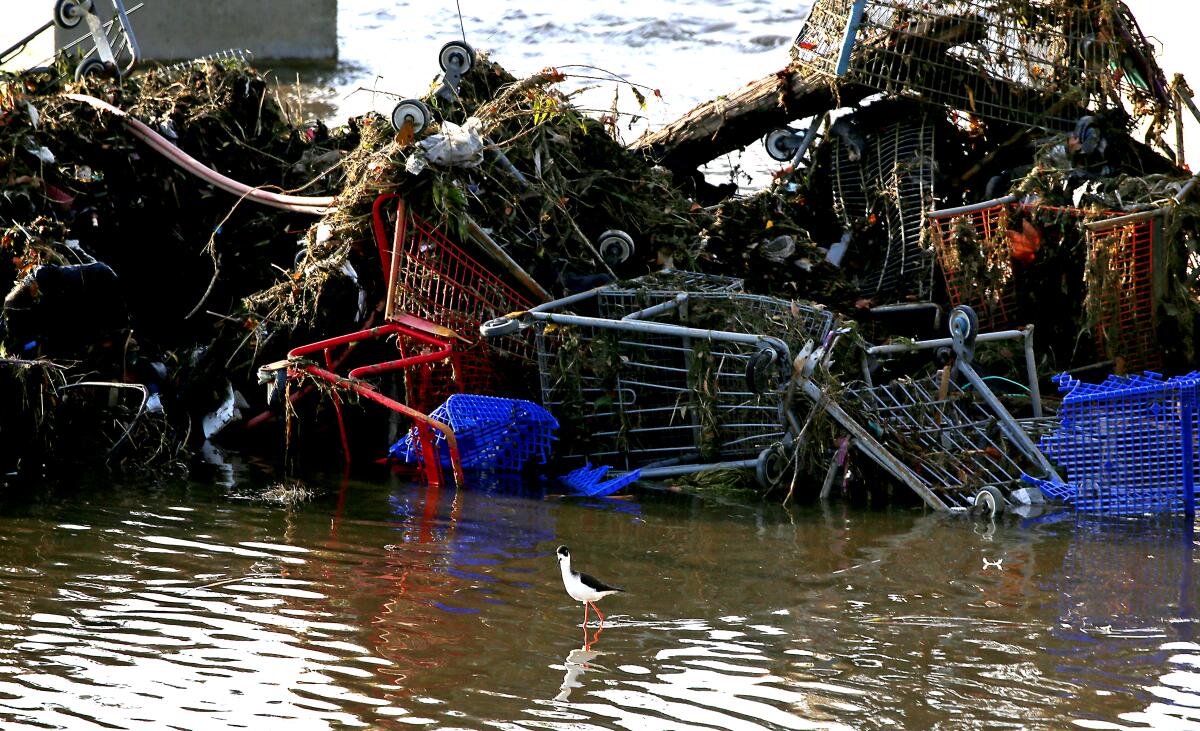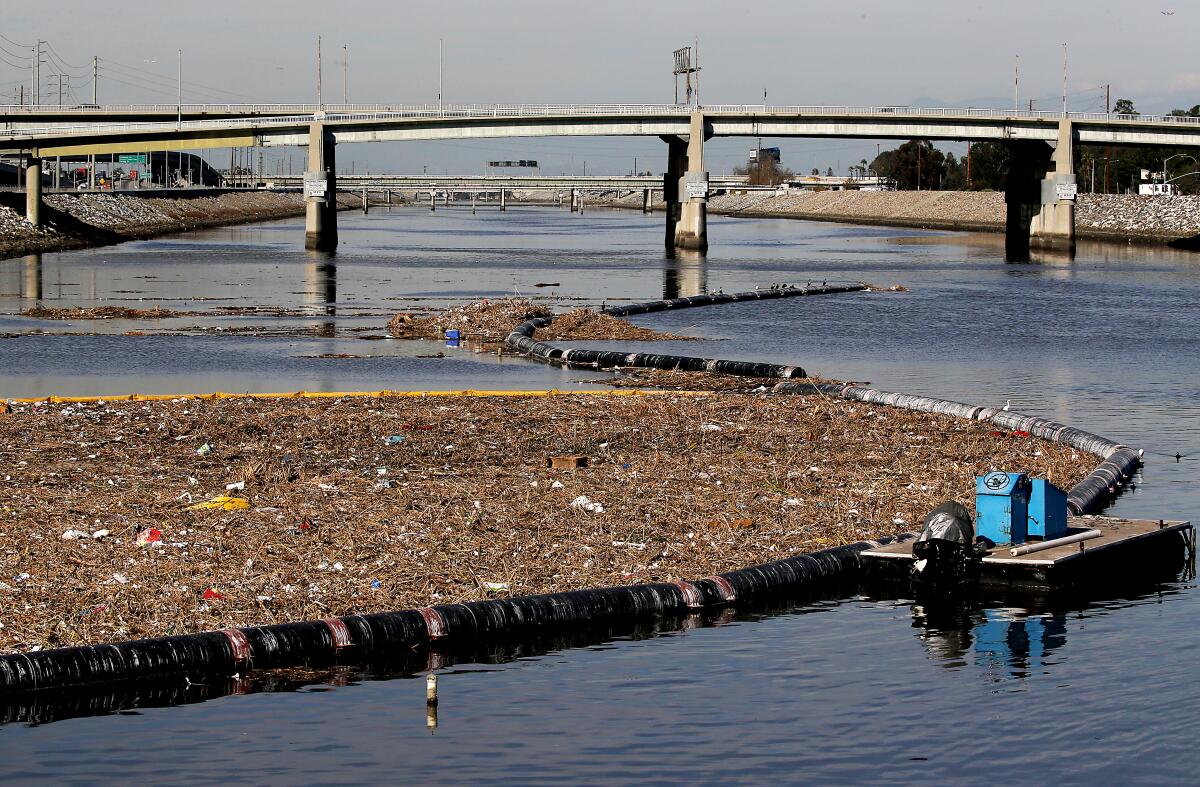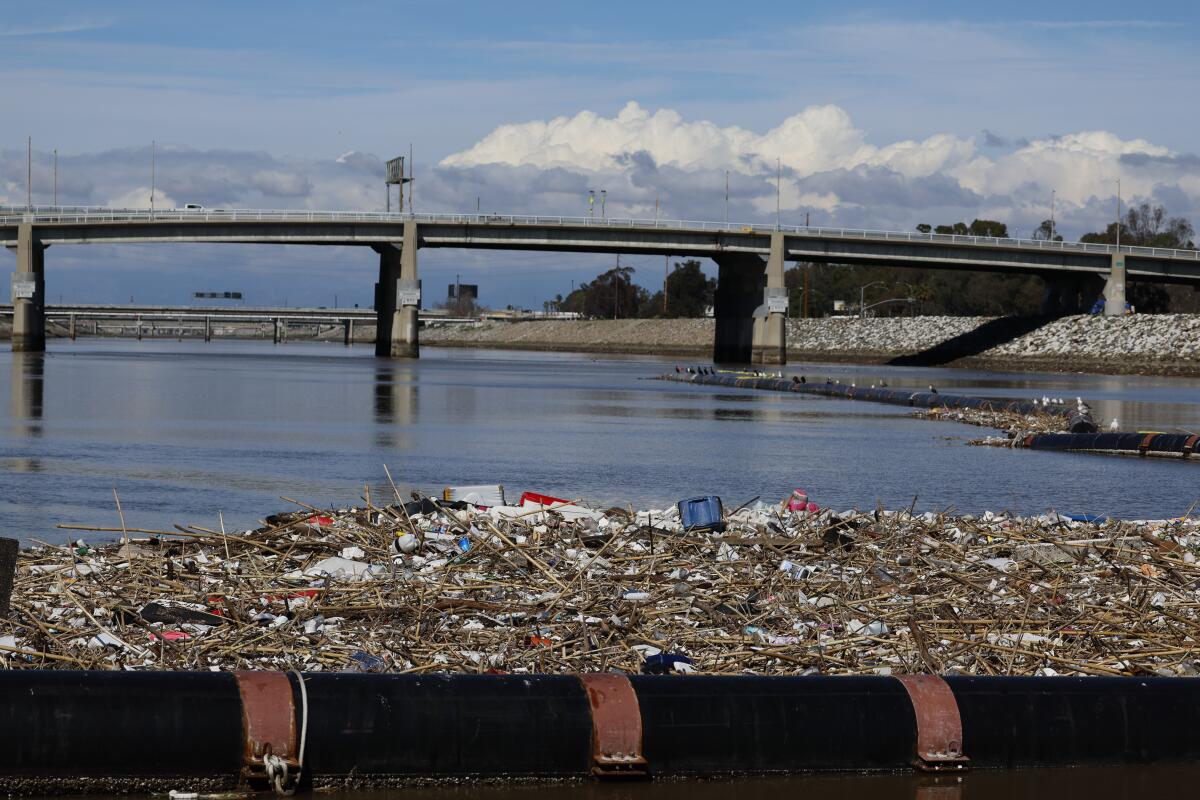Thinking about jumping into a lake or stream in L.A. to cool off? Here are the ones to avoid

- Share via
Angelenos searching for an aquatic adventure at one of Los Angeles County’s many inland waterways during the latest summer heat wave should do some research before taking the plunge, according to Heal the Bay’s River report card released Wednesday.
Heal the Bay analyzed water quality at 35 freshwater sites along Malibu Creek, the Los Angeles River and the San Gabriel River last summer. Of the sites reviewed, 63% received grades ranging from A+ to B, which indicate low health risks for swimmers. Another 37% of sites received C, D or F rankings, indicating higher levels of bacteria and possible health risks.
Six sites along the Los Angeles River, dubbed “freshwater fails,” showed the highest levels of bacteria where contact with water should be avoided, according to the report.
Residents in a gated enclave near the Tujunga wash have had it with blocked roads, illegal parking and piles of trash left behind as throngs of people converge along the banks of the cool, gentle stream seeking heat relief.
Here are river locations in the Los Angeles area that pose the highest risk of illness
1. Compton Creek (lower L.A. River watershed)
2. L.A. River below the Compton Creek confluence
3. Bull Creek (lower L.A. River watershed)
4. Tujunga Wash at Hansen Dam (upper L.A. River watershed)
5. L.A. River at Willow Street (lower L.A. River watershed)
6. L.A. River below the Rio Hondo confluence (lower L.A. River watershed)
“We’re seeing a lot of the recreational areas in open spaces or close to open spaces are getting good grades,” said Annelisa Moe, associate director of science and policy at Heal the Bay. “When we work down into the L.A. Basin and there’s more urbanization, we’re seeing those grades decline, which is not surprising, but very telling of where the source of pollution is coming from, which is that urban runoff.”

All the sites on the lower Los Angeles River aside from Compton Creek have concrete riverbeds and banks and none are designated for recreational use. However, the river channels are frequently used by runners, cyclists, bird watchers and others.
“These failing sites are located within urbanized areas of the watershed, likely reflecting higher bacteria levels from various sources such as animal waste and human activities,” the report states.
The report card is similar to Heal the Bay’s annual list of the cleanest and dirtiest California beaches. Urban runoff that pollutes the ocean frequently begins in these fresh rivers, but, unlike for beaches, there is no statewide oversight, standardization or funding for freshwater pollution monitoring in California.
“There are many places in Los Angeles where the closest place to recreate is a freshwater site, a river location, a swimming pool or a lake, so to fill the gap we’ve been monitoring these recreation areas since 2014,” Moe said.
These California beaches, including the Santa Monica Pier and Mother’s Beach in Marina del Rey, received the poorest water quality grades from Heal the Bay.
The report identifies 10 locations — five in the upper L.A. River watershed, four on the San Gabriel River and one on Malibu Creek — where bacteria levels consistently remained below health standards.
Those sites are: Hansen Dam Lake, Hidden Springs, Big Tujunga Creek at Vogel Flats, Big Tujunga Creek at Delta Flats, Gould Mesa, San Gabriel River Upper West Fork, San Gabriel River Upper East Fork, San Gabriel River East Fork at Cattle Canyon, San Gabriel River Upper Cattle Canyon and Rock Pool in the Malibu Creek watershed.

To rank water quality in recreation areas, Heal the Bay scientists compared water samples collected weekly between June and September 2023 and data from other monitoring programs and government agencies. The samples measure the presence of fecal indicator bacteria pollution.
More to Read
Sign up for Essential California
The most important California stories and recommendations in your inbox every morning.
You may occasionally receive promotional content from the Los Angeles Times.













